Designers are well-aware that as data rate requirements approach and surpass 112 Gbps PAM4, they face challenges of balancing increasing throughput, scalability and density demands with concerns such as power consumption, signal integrity, cost and time-to-market, to name a few.
A live demonstration, from DesignCon 2021, shows how Samtec Eye Speed® Ultra Low Skew Twinax cable can help designers overcome some of these challenges by using Samtec Flyover® high-speed cable systems.
Rohde & Schwarz’s Greg Vaught and Samtec’s Ralph Page walk us through the setup. It includes a Rohde & Schwarz ZNA67 Vector Network Analyzer with four ports, which is rated up to 67 GHz frequency. The demo also has a calibration unit to calibrate the test setup.
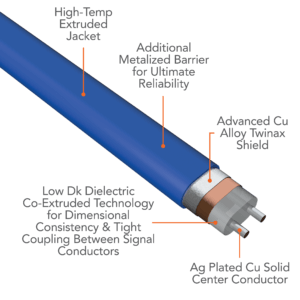
The four ports are making a differential measurement of a Samtec NovaRay® Cable System SI Evaluation Kit. That board has a NovaRay high-density cable system with 18” (46 cm) of Eye Speed Ultra Low Skew Twinax cable. That 18” (46 cm) of cable has about -6 dB of loss, despite being only 34 AWG. This precision cable, which is manufactured in the U.S., also has an excellent bend radius of 0.125″ (0.3175 cm). This twinax can achieve this bend radius with no distortion of the signal.
The Rohde & Schwarz ZNA67 is connected to the NovaRay evaluation board, with a differential input and differential output measurement on one of the Eye Speed Twinax cables. It’s important to note that the ZNA has the ability to model and de-embed the connectors and transmission lines on the evaluation board which are not part of the cable being tested. Greg gives a quick walk-through of the measurements.
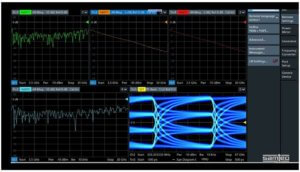
Two of the key measurements are the differential S-parameters of the cable, and a simulated eye diagram. If you take a closer look at the S-parameters, you can see the very low insertion loss and “really good” reflection characteristics. The simulated eye pattern of the PAM4 modulated signal shows that the channel going through the Eye Speed cable will not distort the real-world high-speed digital serial signal.
Here’s a few other blogs that may be of interest to you:
Practical Connector Characterization Techniques: An SIJ Panel Discussion
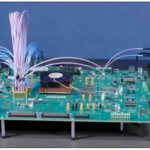
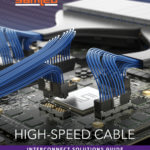
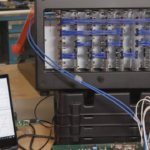
Leave a Reply